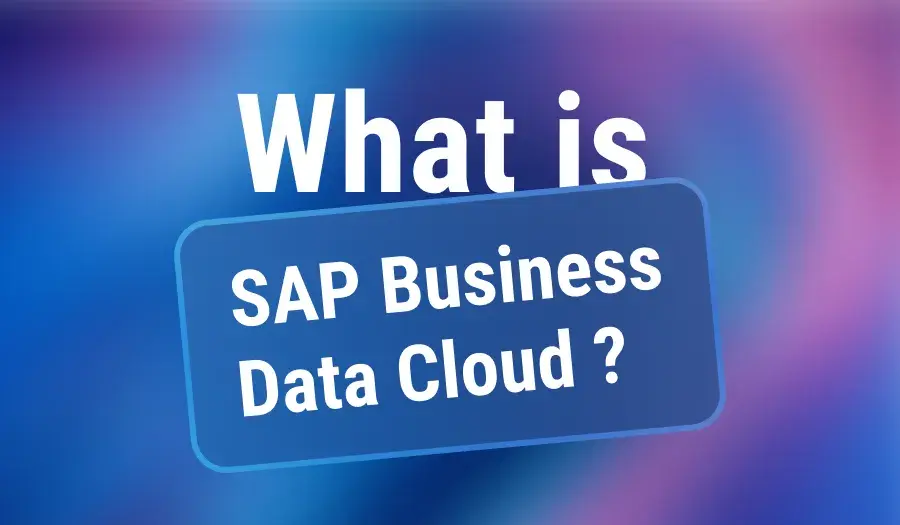Learn about key differences between SAP S/4HANA and Microsoft Dynamics AX, discover their benefits and weaknesses, and choose the right ERP for your business.
Global digital transformation is rapidly taking over the business world, and choosing an ERP system is becoming a strategically critical decision for any company. The ERP choice directly influences the efficiency of business processes, scalability, flexibility, and adaptability to market changes; a wrong choice could cost a fortune.
Many businesses move their procedures to SAP (SAP Cloud ERP or SAP S/4HANA On-Premises), which allows for uninterrupted technology adoption and overall business growth. At the same time, there’s another popular solution on the ERP market: Microsoft Dynamics AX (formerly known as Axapta). Both systems offer extensive functionality for finance management, logistics, manufacturing, and human resources, yet they are different in architecture, customization capabilities, and total cost of ownership (TCO).
In this post, we’ll review and compare SAP vs. Microsoft Dynamics AX to help you make the most beneficial choice for your business.
Microsoft Dynamics AX (Axapta): Solution Overview
Microsoft Dynamics AX, formerly known as Axapta, is an ERP system by Microsoft designed to manage complex processes in medium-sized and large-scale companies. Originally developed in the late 1990s, it became part of the Microsoft Dynamics product line and was later integrated into the Dynamics 365 Finance & Operations platform.
Key features of Microsoft Dynamics AX include:
- Financial management and budgeting
- Supply Chain Management (SCM)
- Manufacturing process support
- Retail industry solutions
As a part of Microsoft, Dynamics AX seamlessly integrates with other Microsoft products, such as Office 365, Power BI, and Azure, to create a single IT environment that offers advanced analytics and a user-friendly experience.
SAP ERP: Solution Overview
SAP ERP is a global platform that serves more than 400,000 customers worldwide. The most popular versions are SAP ECC (will no longer be supported in 2027) and the modern SAP S/4HANA. Built on in-memory HANA technologies, SAP S/4HANA can be deployed both on-premises and in the cloud. Deployed in the cloud, SAP S/4HANA is now referred to as SAP Cloud ERP (public cloud) or SAP Cloud ERP Private (private cloud).
Key SAP S/4HANA modules include:
- Financial management and accounting
- Procurement and logistics
- Sales and customer service
- Human Capital Management (HCM)
- Production and planning
SAP S/4HANA’s significant advantages are its scalability and the integrated SAP Business Technology Platform (BTP), which combines analytics, AI, IoT, and advanced integration capabilities.
While SAP S/4HANA is particularly popular among large industrial, pharmaceutical, and logistics enterprises, medium-sized companies can also benefit from it with the help of the GROW with SAP implementation journey, created to help net new SAP clients and mid-market businesses.
Key Differences of SAP S/4HANA vs. Microsoft Dynamics AX
While both SAP S/4HANA and Dynamics AX are designed to help businesses manage enterprise resource planning, it would be wrong to say they are equal.
Architecture
In terms of architecture, SAP S/4HANA is built on SAP's proprietary in-memory HANA database, which gives the platform a cloud-native approach, optimized for real-time performance and analytics. Besides, SAP S/4HANA is enhanced with artificial intelligence (AI) and IoT integrations, allowing for predictive analytics and maintenance.
Microsoft Dynamics AX is built on the Microsoft Azure cloud platform and is strongly integrated with other Microsoft products (Office 365, Teams, Power BI). The platform is highly customizable, leveraging Microsoft’s Power Platform, with IoT and AI support additionally available via Power Platform.
Industrial scope
As for the industrial scope, SAP S/4HANA best fits large enterprises with complex processes and global business operations. Its strong industry-specific solutions, like IIoT (industrial internet of things), are notable in manufacturing, pharmaceuticals, automotive, metals and mining, IT, and logistics sectors. Still, SAP doesn’t limit itself to catering only to large-scale businesses; it offers solutions suitable for small and medium enterprises.
Microsoft Dynamics AX, on the other hand, is a popular choice for mid-sized to large organizations seeking flexibility and budget-friendly solutions. It is often chosen by companies in retail, discrete manufacturing, distribution, and service-oriented industries.
Customization and flexibility
Customization and flexibility options in SAP S/4HANA are possible, but not a necessity, as the ERP encourages standardized business processes with pre-configured best practices, ensuring a compatible and unified ecosystem. If you want to add a custom module or process, professional assistance may be required.
Microsoft Dynamics AX offers easier customization flexibility through Microsoft’s Power Platform (Power Apps, Power Automate) to successfully adapt processes to specific business needs. The system doesn’t utilize industrial best practices, so businesses have to rely on their in-house dev teams in terms of process integrity and compatibility.
Data analysis
SAP S/4HANA’s data analysis capabilities are pretty advanced, with real-time and predictive analytics functionality of the SAP HANA database embedded directly into processes, leveraging timely data processing and nurturing data-driven decision-making.
Microsoft Dynamics AX has strong integration with Power BI, providing comprehensive, user-friendly visual analytics, highly-interactive dashboards, and accessible data visualization capabilities. Yet, it lacks real-time data readiness, which makes businesses wait until the fetched data is seen on the visual board.
Global reach and scalability
SAP S/4HANA demonstrates extensive capabilities for global scalability and compliance, which is why it is a popular choice among multinational enterprises. Broad localization, compliance, and support ensure international regulatory requirements fulfillment and continuity of global operations.
Microsoft Dynamics AX proves to be effective for scaling regionally, though it is historically less scalable than SAP solutions. Dynamics AX is popular within European and North American markets, allowing for regional compliance and operations unity.
User experience
In terms of user experience, SAP ERP solutions used to be criticized for a steep learning curve and difficult UX. Today’s SAP S/4HANA has fixed everything with a streamlined, modern user interface via the SAP Fiori interface, focusing on simplified and standardized workflows to offer a consistent, easy-to-learn experience.
Microsoft Dynamics AX user experience is common for any Microsoft user, enhancing user adoption and productivity. Strong integration with widely used tools like Excel, Outlook, and Teams will suit companies that want to keep their operations within the Microsoft ecosystem.
Total cost of ownership (TCO)
SAP S/4HANA, despite having higher initial investment (especially in extensive deployments) is designed to lower TCO with time, streamlining operations and reducing the burden across teams and processes (management, maintenance, IT, etc.). A proactive approach to problem-solving allows SAP S/4HANA to cut costs associated with business lags and operational disruptions because of system malfunctioning, which also leads to lower TCO.
Microsoft Dynamics AX doesn’t usually require significant upfront costs and licensing fees, yet, scalability limitations may impose additional costs in the future, as more complex customizations and integrations may be needed due to business expansion.
Implementation methodologies
SAP S/4HANA implementation uses the SAP Activation methodology, which breaks the whole process into six essential steps: discover, prepare, explore, realize, deploy, and run. This approach allows for tailoring SAP ERP solutions to fit all the business’s specific needs and ongoing post-deployment monitoring to fix any issues in a timely manner.
Dynamics AX utilizes Microsoft Sure Step, a structured, methodology-driven approach provided by Microsoft for successfully implementing and managing Dynamics software projects. It comprises standardized best practices, tools, and guidelines covering the entire project lifecycle, helping teams deliver predictable outcomes and ensure successful ERP implementation.
Competitive Comparison Table: Microsoft Dynamics AX (Axapta) vs. SAP S/4HANA
In order to help you better understand the differences between SAP S/4HANA and Microsoft Dynamics AX and the benefits of each, we’ve created a comparison table that includes key aspects.
| Aspect | SAP Cloud ERP | Microsoft Dynamics AX |
| Typical client | Big enterprises | Medium to large businesses |
| Architecture | In-memory (SAP HANA), module | Traditional, client-server |
| Customization | Flexible but complex | Easy and available |
| Scalability | High-level | Limited |
| User interface | Modern, user-centric SAP Fiori | Standard MS interface |
| Deployment speed | Slower, but allows for profound integration | Quick |
| AI/IoT support | Built-in via SAP BTP | Added via Power Platform |
| Cloud solutions | S/4HANA Cloud | Dynamics 365 |
| Deployment costs | Higher | Lower |
| BI integration | SAP Analytics Cloud | Power BI |
| Cloud infrastructure | SAP Cloud/ Hyperscalers | Azure |
| Mobile availability | Via SAP Fiori | Via Power Apps |
| Maintenance costs | Higher | Lower |
When SAP Is Better Than Dynamics AX
Both systems have strengths and weaknesses, depending on the perspective of the business. SAP S/4HANA will definitely be a better choice over Microsoft Dynamics AX if:
- Your business is global, with complex organizational structures.
- You operate within an industry demanding real-time data processing capabilities.
- Your company is looking for extensive international compliance and regulatory support.
- Your enterprise requires industry-specific, tailored solutions and processes.
SAP S/4HANA (now SAP Cloud ERP) offers advanced real-time analytics capabilities and scalability options, which are essential for big businesses operating worldwide. Besides, SAP offers localization and compliance within all of their solutions, making the system suitable for multinational enterprises needing to adhere to various local regulations and accounting standards.
SAP offers robust industry-specific solutions tailored for complex sectors like manufacturing, pharmaceuticals, chemicals, automotive, and logistics. Combined with a standardized best-practice approach, these solutions simplify operational management in these industries.
Another benefit of SAP S/4HANA is that it integrates seamlessly with SAP BTP, combining analytics, AI, IoT, and machine learning under one hood to create significant value through digital transformation and innovative applications.
When Microsoft Dynamics AX Is Sufficient
It would not be fair to say that all businesses should prefer SAP S/4HANA over Microsoft Dynamics AX (ex. Axapta). SAP ERP solutions, while offering stability, introducing innovations, and future-proofing your business, have high initial implementation costs and take more time to set up and adjust the system. So, Microsoft Dynamics AX will suit you better if:
- Your business is mid-sized and operates regionally.
- You utilize Microsoft products such as Teams, Outlook, and Power BI.
- You want a simple interface and quick implementation.
- You’re on a budget and need a solution with cheaper implementation and support.
Keep in mind that you might consider shifting to SAP when your business grows bigger and becomes a global market player.
How LeverX Can Help Implement SAP ERP Solutions
SAP S/4HANA implementation is a complex procedure that may require extensive IT expertise and professional assistance. As an SAP Golden Partner, LeverX helps businesses successfully implement SAP solutions, allowing for digital transformation and innovation adoption. Our specialists will work closely with your team to carefully evaluate all the aspects of your business, defining the SAP implementation scope and customizing the solution to make it a perfect fit for your company. Contact us to see how we can help you in your SAP journey.
Summing It Up
SAP S/4HANA and Microsoft Dynamics AX are both popular ERP solutions, but they are different in many aspects, catering to different business needs and stages. Dynamics AX does a good job when it comes to simplicity and price, while SAP S/4HANA is more oriented towards analytics, global best practices, proven stability, and business scalability.
We hope this guide helps you choose the right solution for your business to keep your processes smooth and stable.
How useful was this article?
Thanks for your feedback!



